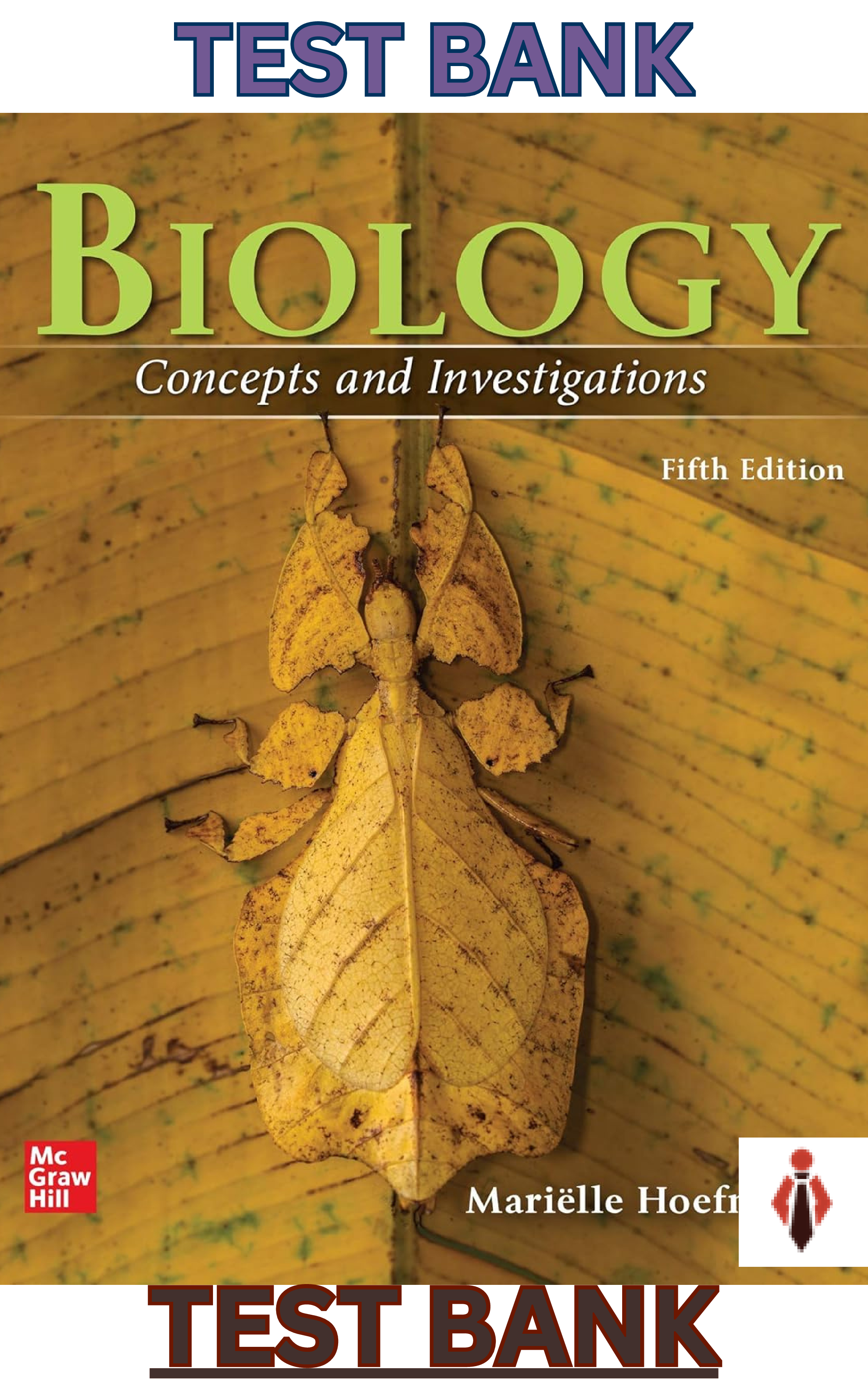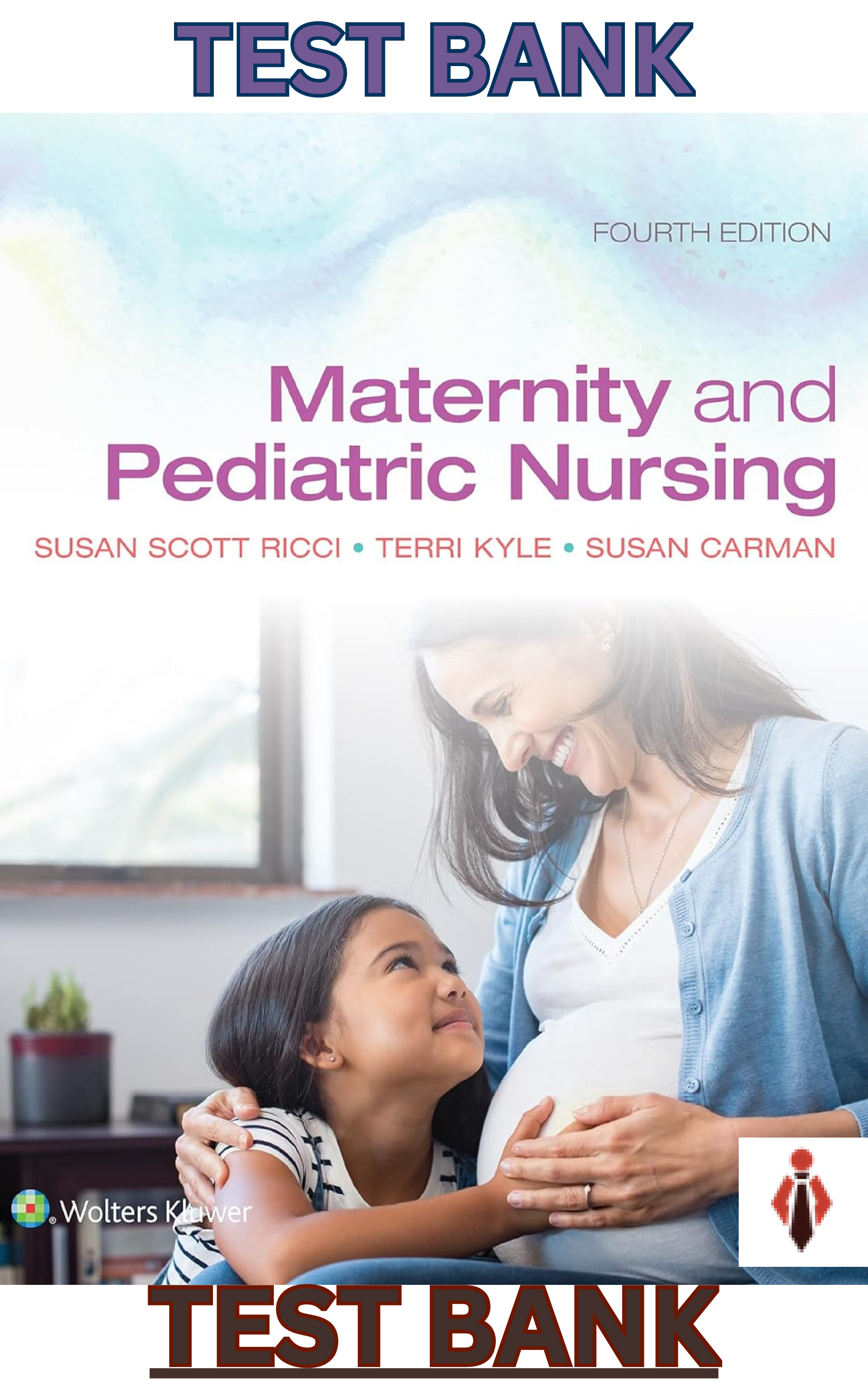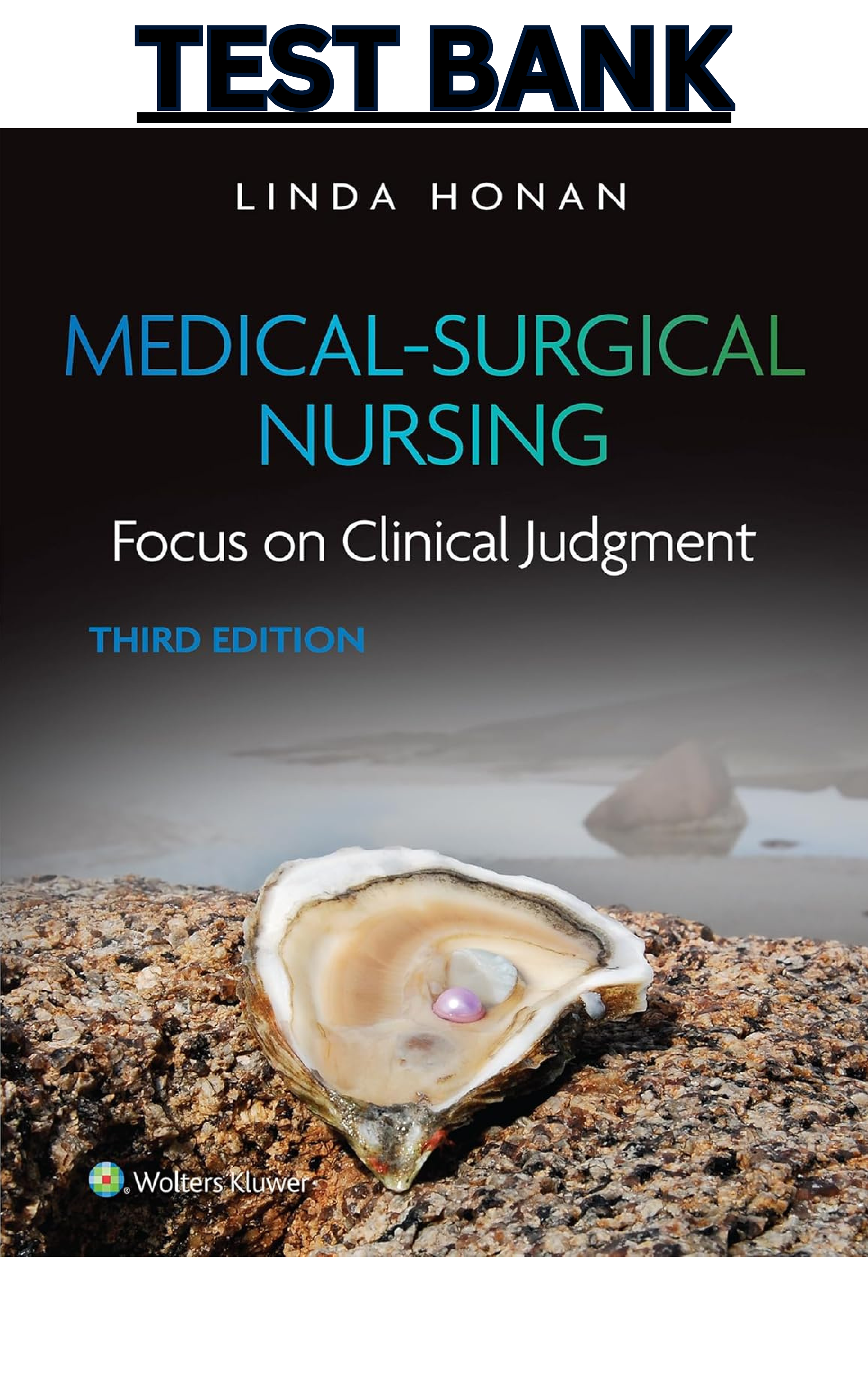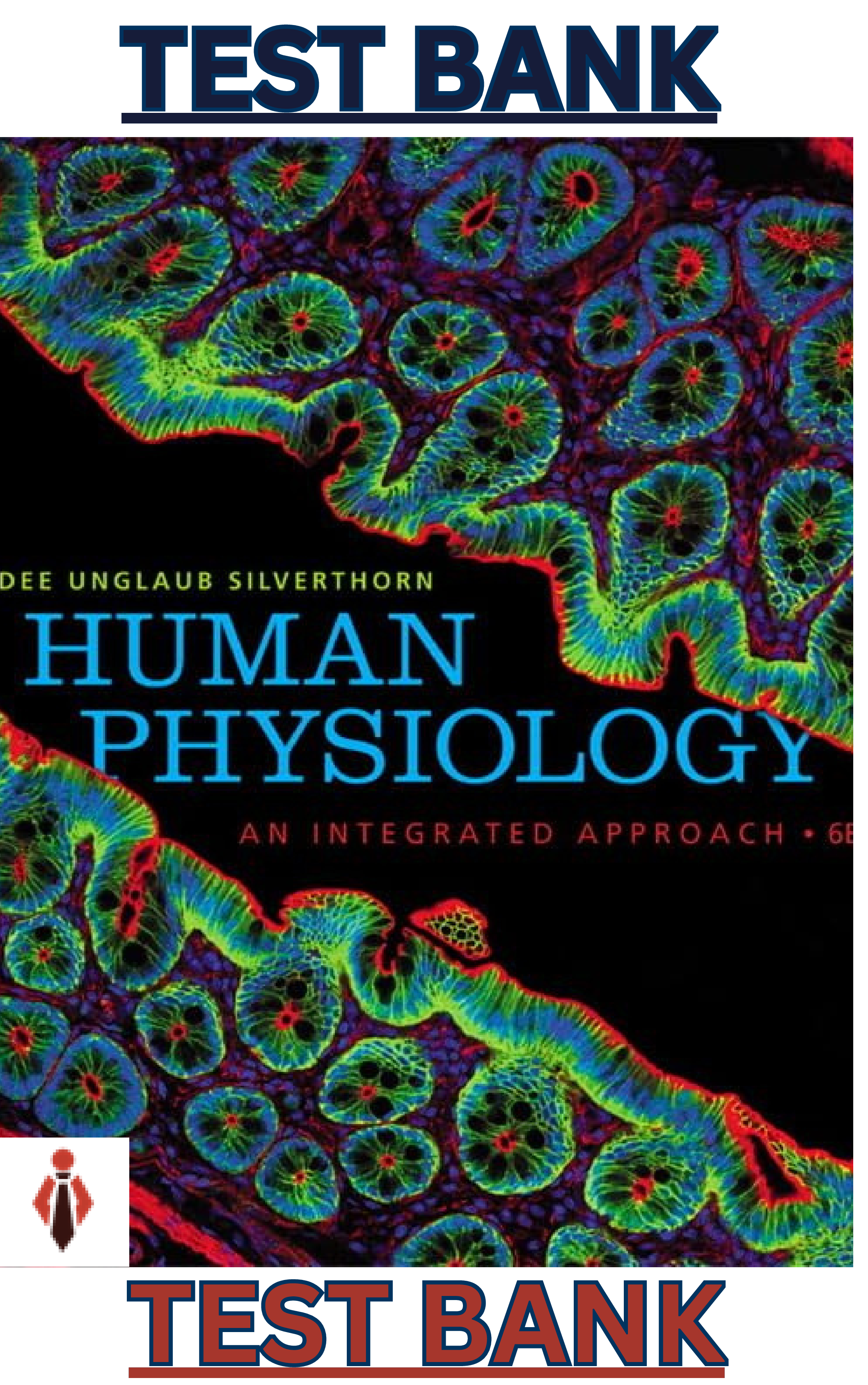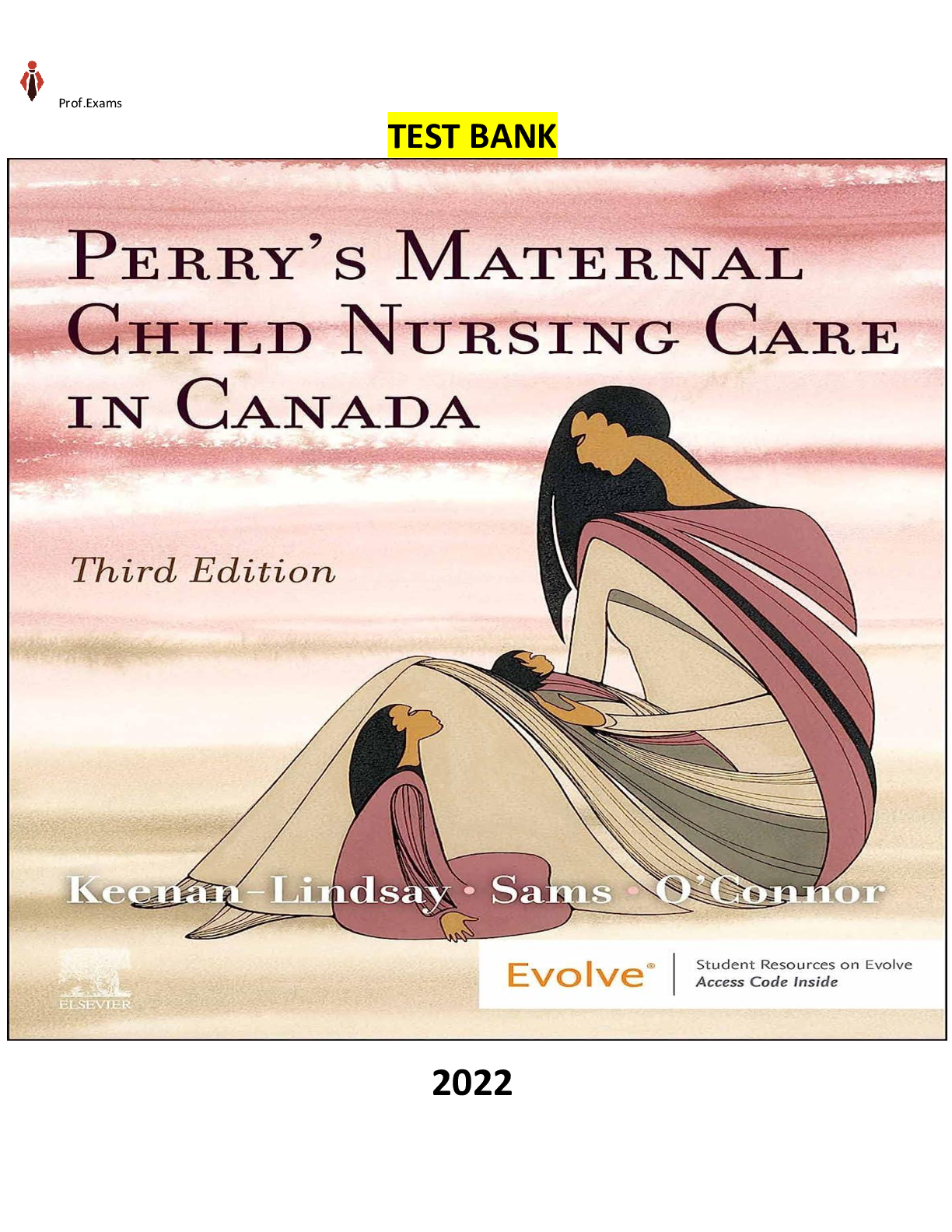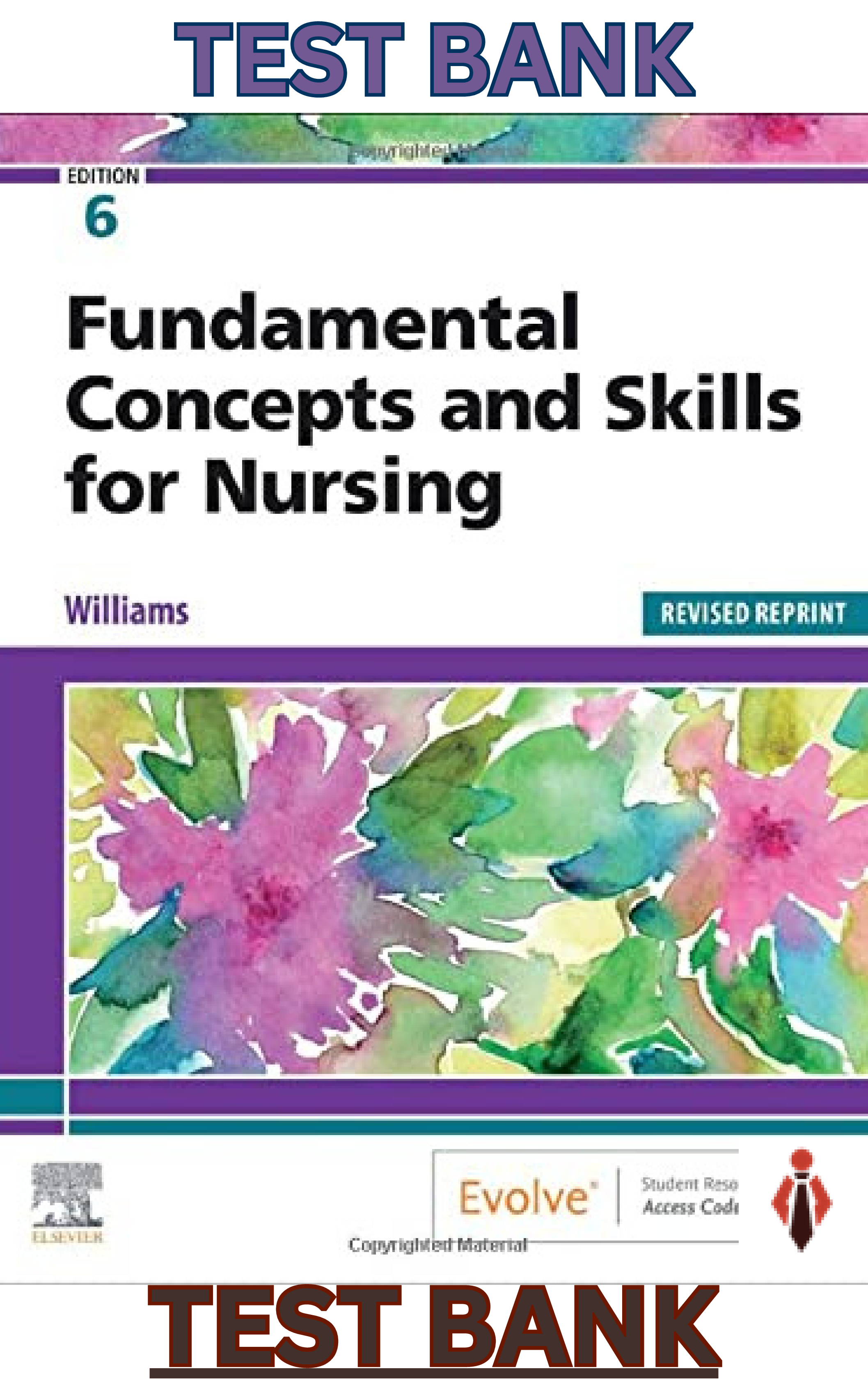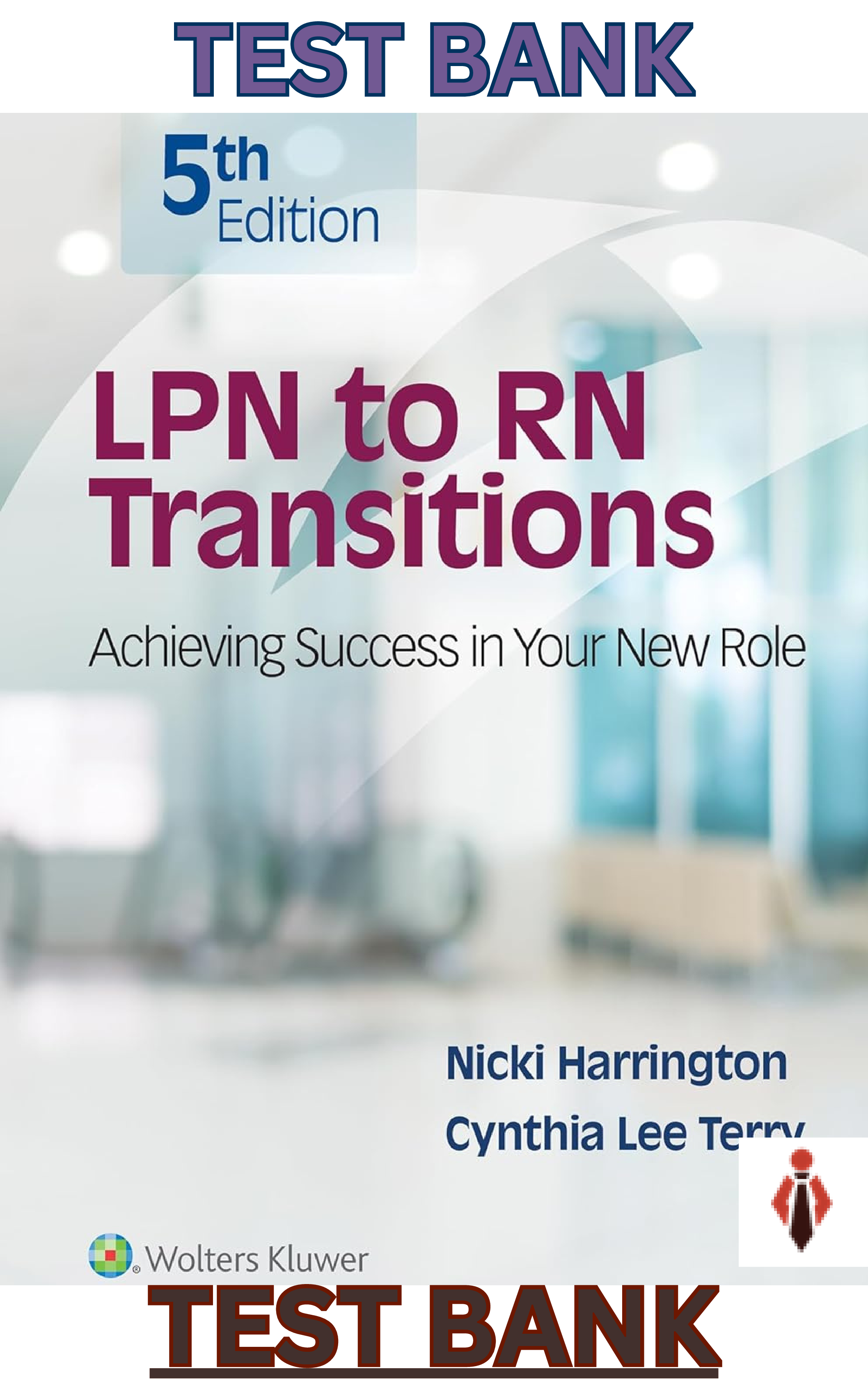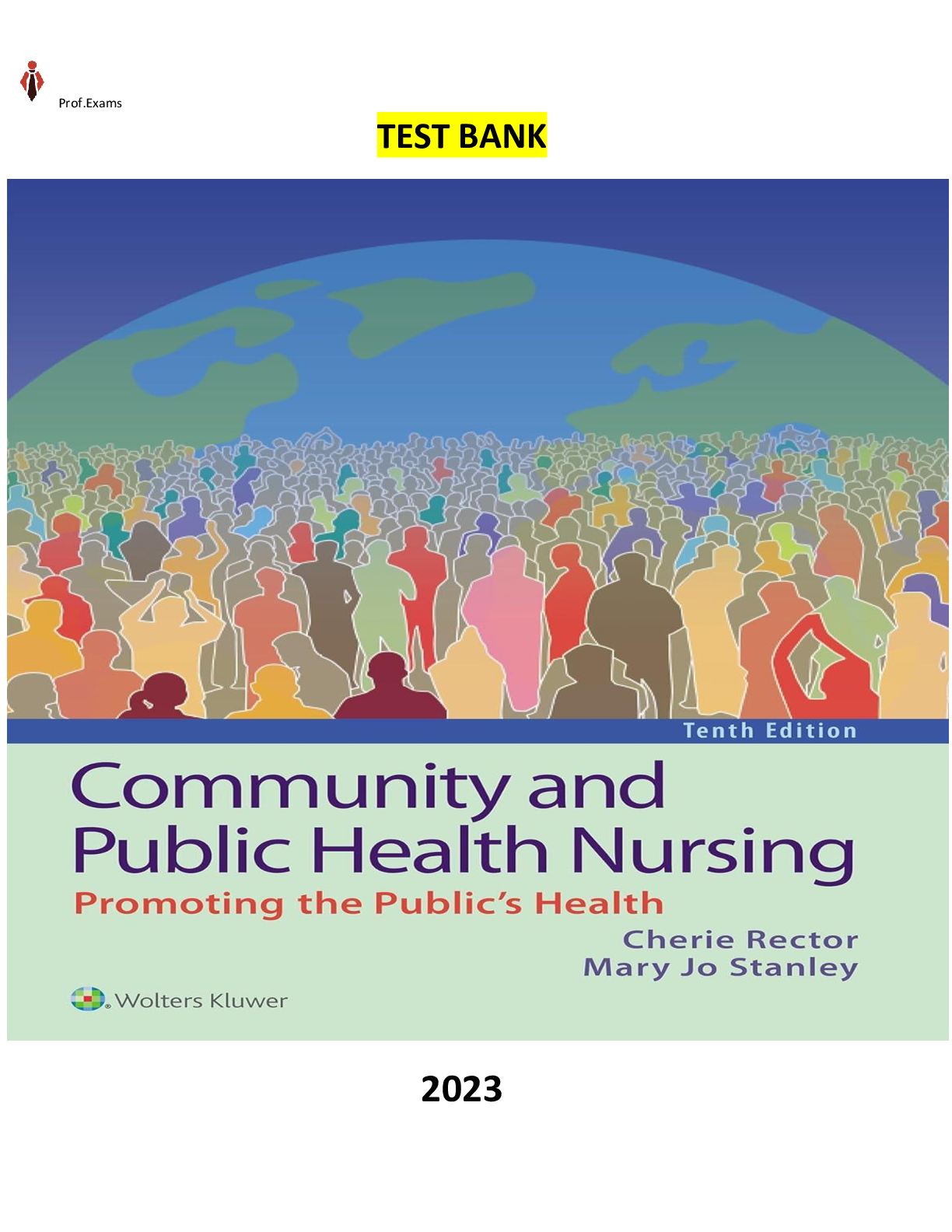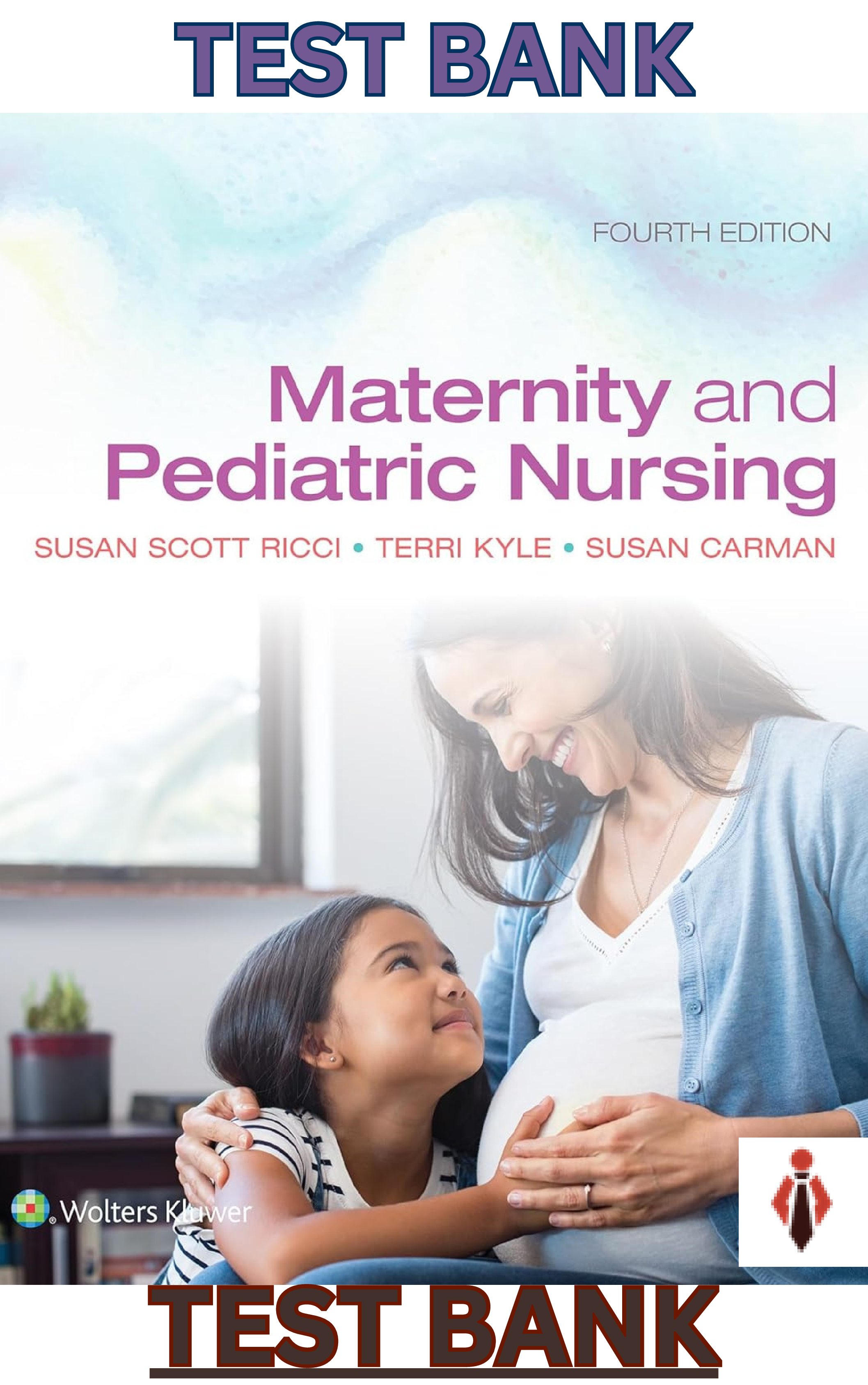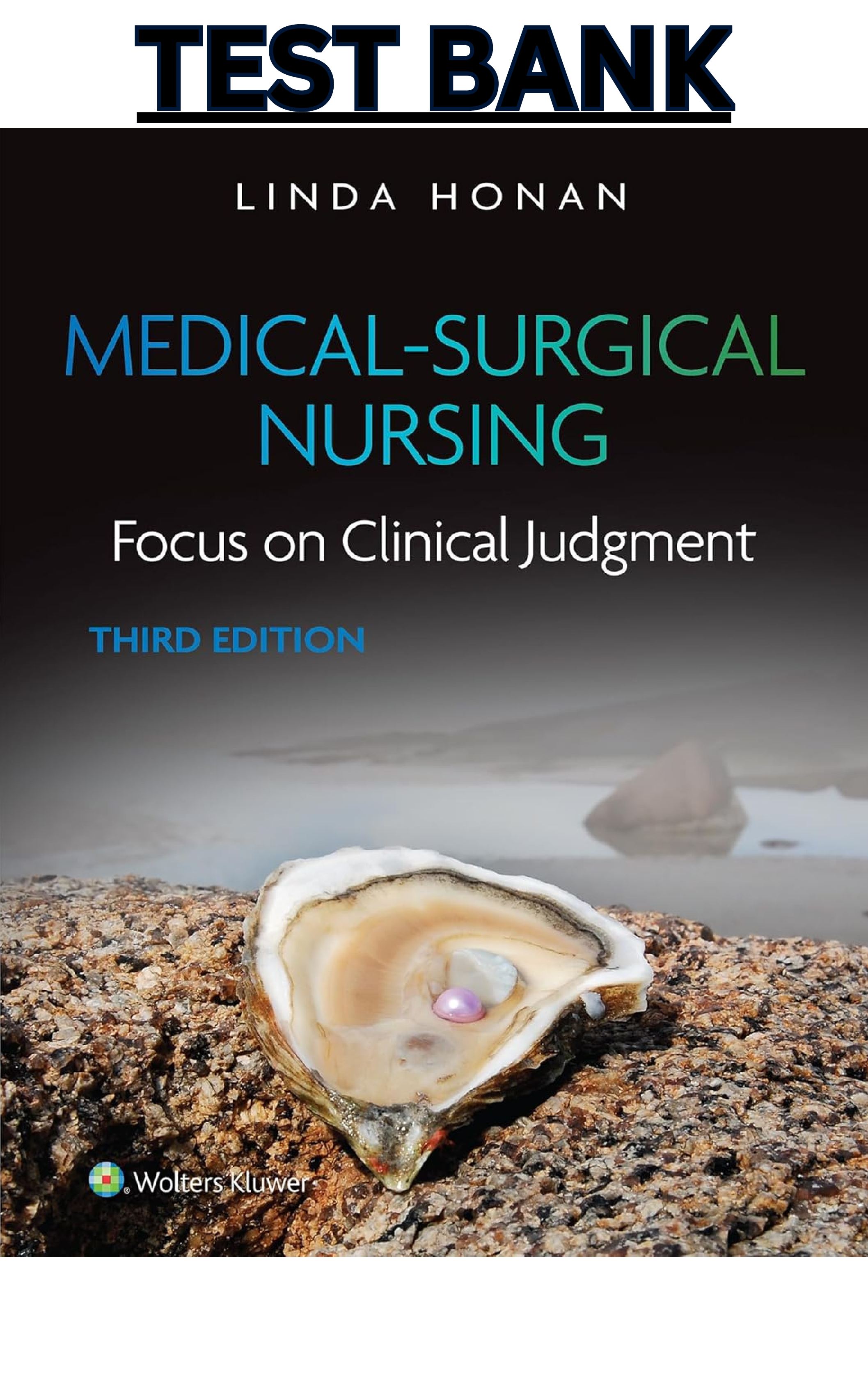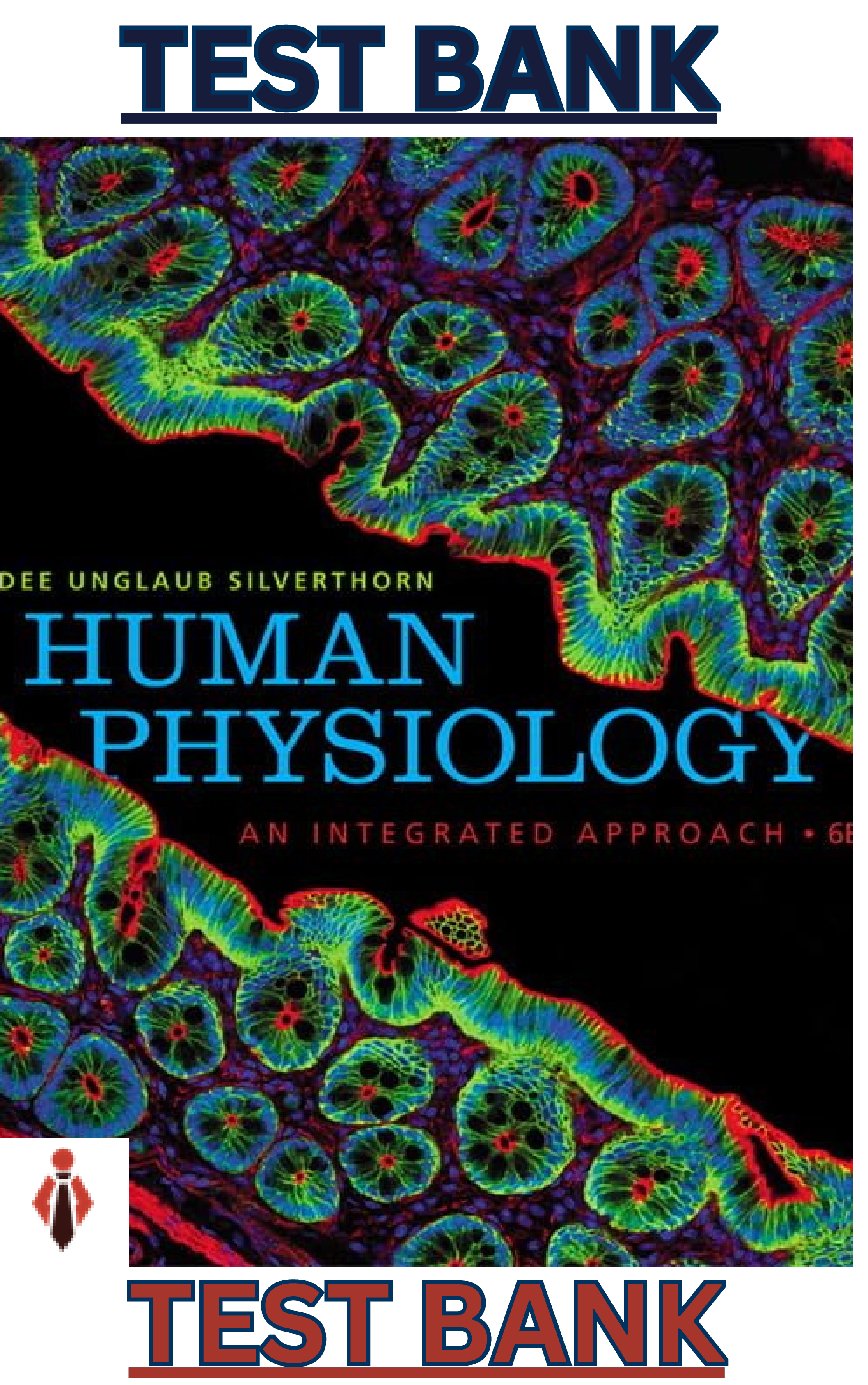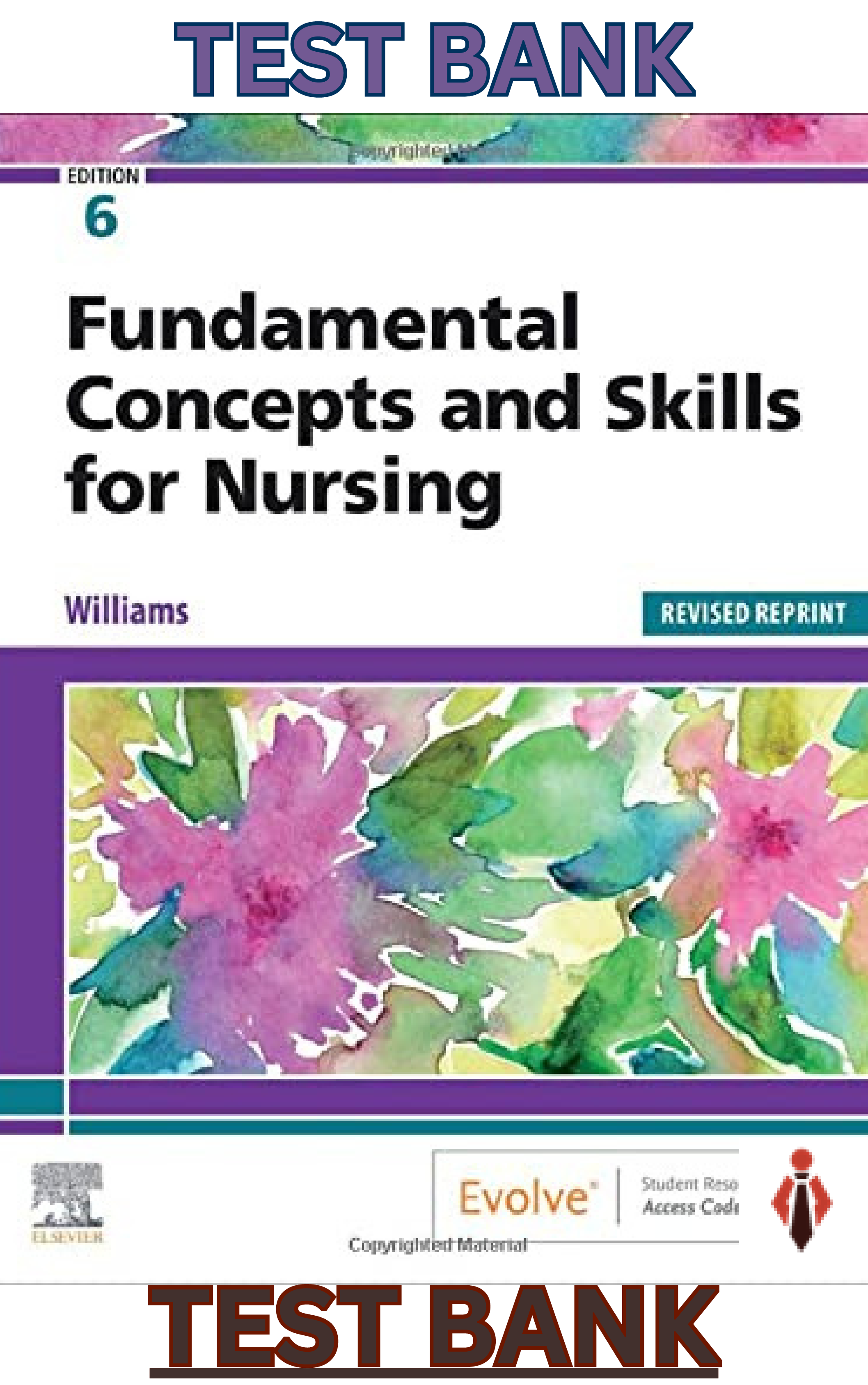*NURSING > TEST BANK > Test bank for Wong's Nursing Care of Infants and Children 11th Edition by Marilyn J. Hockenberry & (All)
Test bank for Wong's Nursing Care of Infants and Children 11th Edition by Marilyn J. Hockenberry & David Wilson - Complete, Elaborated and Latest Test Bank. ALL chapters(1-34) Included and updated
Document Content and Description Below
Test bank for Wong's Nursing Care of Infants and Children 11th Edition by Marilyn J. Hockenberry & David Wilson - Complete, Elaborated and Latest Test Bank. ALL chapters(1-34) Included and updated ... Pediatric, Nursing, Perspectives, Family, Influences, On, Health, Hereditary, Childhood, Assessment, Pain, In, Children, Communicable, Diseases, Newborn, Promotion, Problems, High, Risk, Infant, Toddler, Preschooler, Early, School, Age, Adolescent, With, Special, Needs, Chronic, Illness. Section I: Children, Their Families, and the Nurse Chapter: 1. Perspectives of Pediatric Nursing Chapter: 2. Social, Cultural, Religious, and Family Influences on Child Health Promotion Chapter: 3. Hereditary Influences on Health Promotion of the Child and Family Section II: Childhood and Family Assessment Chapter: 4. Communication, Physical, and Developmental Assessment of the Child and Family Chapter: 5. Pain in Children: Significance, Assessment, and Management Strategies Chapter: 6. Childhood Communicable and Infectious Diseases Section III: Family-Centered Care of the Newborn Chapter: 7. Health Promotion of the Newborn and Family Chapter: 8. Health Problems of the Newborn Chapter: 9. The High-Risk Newborn and Family Section IV: Family-Centered Care of the Infant Chapter: 10. Health Promotion of the Infant and Family Chapter: 11. Health Problems of the Infant Section V: Family-Centered Care of the Toddler and Preschooler Chapter: 12. Health Promotion of the Toddler and Family Chapter: 13. Health Promotion of the Preschooler and Family Chapter: 14. Health Problems of Early Childhood Section VI: Family-Centered Care of the School-Age Child Chapter: 15. Health Promotion of the School-Age Child and Family Chapter: 16. Health Problems of the School-Age Child Section VII: Family-Centered Care of the Adolescent Chapter: 17. Health Promotion of the Adolescent and Family Chapter: 18. Health Problems of the Adolescent Section VIII: Family-Centered Care of the Child with Special Needs Chapter: 19. Impact of Chronic Illness, Disability, or End of Life Care for the Child and Family Chapter: 20. The Child with Cognitive, Sensory, or Communication Impairment Section IX: The Child Who is Hospitalized Chapter: 21. Family-Centered Care of the Child During Illness and Hospitalization Chapter: 22. Pediatric Nursing Interventions and Skills Section X: Childhood Nutrition and Elimination Problems Chapter: 23. The Child with Fluid and Electrolyte Imbalance Chapter: 24. The Child with Renal Dysfunction Chapter: 25. The Child with Gastrointestinal Dysfunction Section XI: Childhood Oxygenation Problems Chapter: 26. The Child with Respiratory Dysfunction Section XII: Childhood Blood Production and Circulation Problems Chapter: 27. The Child with Cardiovascular Dysfunction Chapter: 28. The Child with Hematologic or Immunologic Dysfunction Section XIII: Childhood Regulatory Problems Chapter: 29. The Child with Cancer Chapter: 30. The Child with Cerebral Dysfunction Chapter: 31. The Child with Endocrine Dysfunction Section XIV: Childhood Physical Mobility Problems Chapter: 32. The Child with Integumentary Dysfunction Chapter: 33. The Child with Musculoskeletal or Articular Dysfunction Chapter: 34. The Child with Neuromuscular or Muscular Dysfunction Test bank - Wong's Nursing Care of Infants and Children 11th Edition by Hockenberry & Wilson Test bank for Wong's Nursing Care of Infants and Children 11th Edition by Marilyn J. Hockenberry & David Wilson - ISBN-10 032354939X | ISBN-13 978-0323549394 Chapter 1.Perspectives of Pediatric Nursing MULTIPLE CHOICE 1. The clinic nurse is reviewing statistics on infant mortality for the United States versus other countries. Compared with other countries that have a population of at least 25 million, the nursemakes which determination? a. The United States is ranked last among 27 countries. b. The United States is ranked similar to 20 other developed countries. c. The United States is ranked in the middle of 20 other developed countries. d. The United States is ranked highest among 27 other industrialized countries. ANS: A Although the death rate has decreased, the United States still ranks last in infant mortality amongnations with a population of at least 25 million. The United States has the highest infant death rate of developed nations. DIF: Cognitive Level: Remembering REF: MCS: 6 TOP: Nursing Process: Assessment iMenStC: Cl Needs: Health Promotion and Maintenance 2.hWich is the leading cause of death in infants younger than 1 year in the United States? a. Congenital anomalies b. Sudden infant death syndrome c. Disorders related to short gestation and low birth weight d. Maternal complications specific to the perinatal periodANS: A Congenital anomalies account for 20.1% of deaths in infants younger than 1 year compared withsudden infant death syndrome, which accounts for 8.2%; disorders related to short gestation andunspecified low birth weight, which account for 16.5%; and maternal complications such as infections specific to the perinatal period, which account for 6.1% of deaths in infants younger than 1 year of age. DIF: Cognitive Level: Remembering REF: MCS: 7 TOP: Nursing Process: Planning MSC: Client Needs: Health Promotion and Maintenance 3. What is the major cause of death for children older than 1 year in the United States? a. Heart disease b. Childhood cancer c. Unintentional injuries d. Congenital anomalies ANS: C Unintentional injuries (accidents) are the leading cause of death after age 1 year through adolescence. The leading cause of death for those younger than 1 year is congenital anomalies,and childhood cancers and heart disease cause a significantly lower percentage of deaths in children older than 1 year of age. DIF: Cognitive Level: Understanding REF: MCS: 7 TOP: Nursing Process: Planning MSC: Client Needs: Health Promotion and Maintenance 4. In addition to injuries, what are the leading causes of death in adolescents ages 15 to 19 years? a. Suicide and cancer b. Suicide and homicide c. Drowning and cancer d. Homicide and heart disease [Show More]
Last updated: 2 weeks ago
Preview 1 out of 950 pages

Reviews( 0 )
Document information
Connected school, study & course
About the document
Uploaded On
Jul 23, 2021
Number of pages
950
Written in
Additional information
This document has been written for:
Uploaded
Jul 23, 2021
Downloads
0
Views
64




